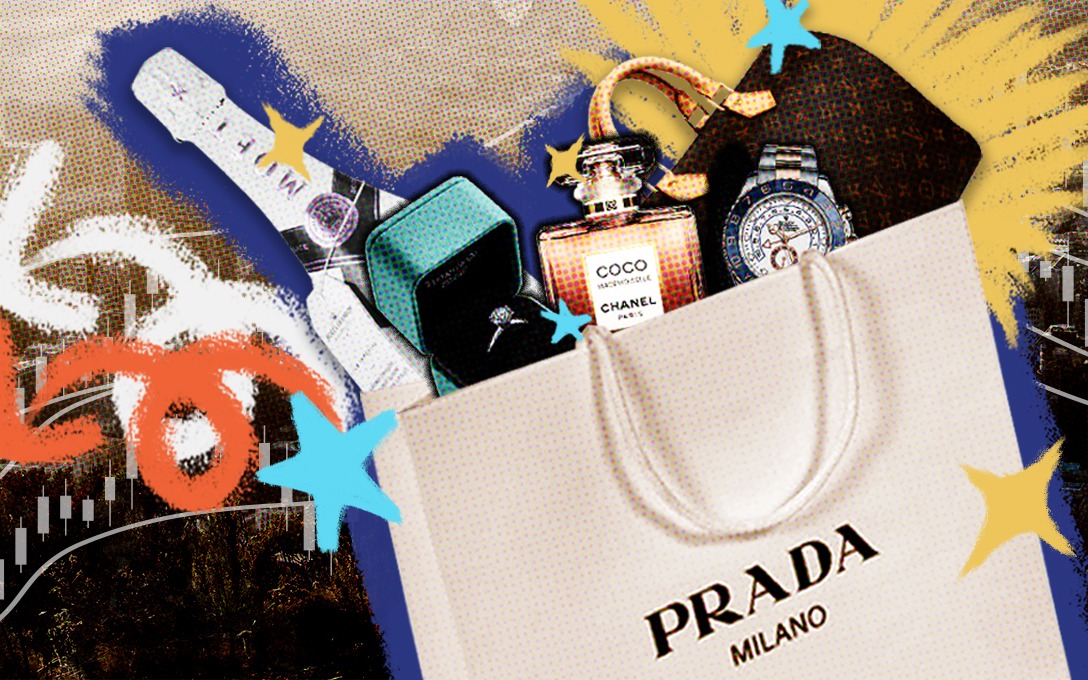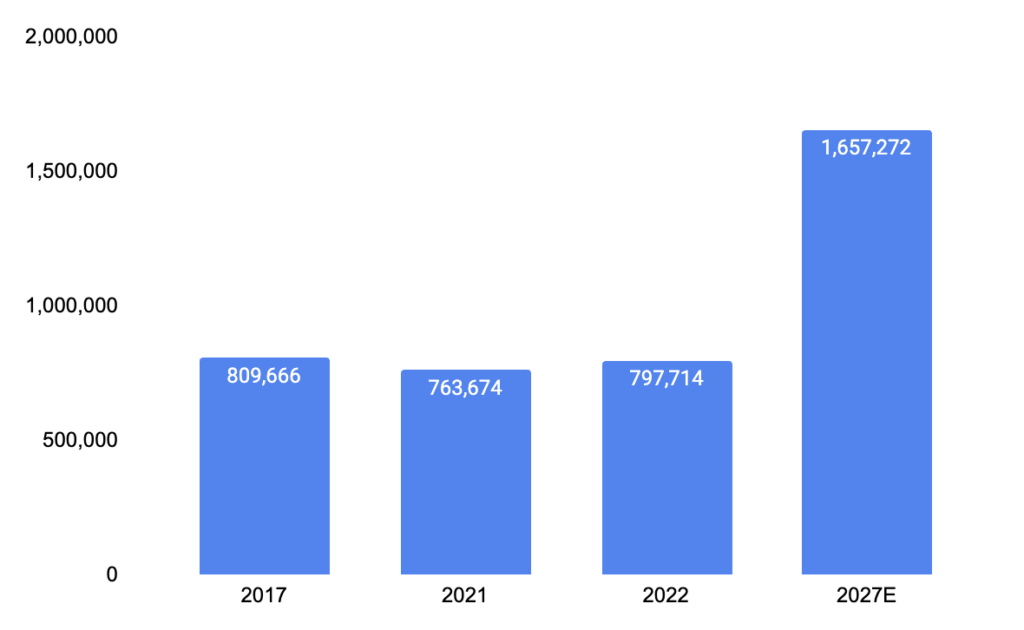Add Bling To Your Portfolio With Luxury Stocks

One of the main characteristics of Indian economic growth is the resulting increase in consumption. As people earn more & have more disposable income, they also spend more to consume various goods and services. While mass-market goods & services have been the natural beneficiaries of this trend, the increasing spending power of Indians has also given rise to the luxury segment in India. But before we see how we can capitalize on this trend as investors via luxury stocks, let’s quickly understand the state of the luxury market in India.
Luxury Market Size
The Indian luxury market comprises of goods and services:
- Luxury goods include high-end apparel, accessories (like jewellery, handbags, watches, etc.) premium packaged food, home decor, wines & spirits, fine arts, automobiles, etc.
- Luxury services include fine dining, international travel, premium hotels, spas/resorts, etc.
Market for luxurious goods and services in India is still perceived to be in a nascent stage and constitutes less than 5% of the global market. In contrast, China has a more than 30% share of the global luxury market. However, Indian luxury the market is growing at a fast pace and is expected to reach $200 billion by 2030, from a projected value of $8.5 billion in 2023.
Key Drivers of the Luxury Market
In 2015, India for the first time surpassed Russia in terms of the number of billionaires. The country now stands 3rd in billionaire numbers, behind USA and China. Additionally, India’s ultra-high-net-worth individuals (UHNWIs), with a net worth of over $30 million are estimated to grow by 58.4% from 12,069 in 2022 to 19,119 individuals in 2027.

The number of HNIs (High net worth individuals with more than $1 million income) in India is expected to grow at 107% between 2022-27.
Increasing urbanisation, growing number of affluent population & high net worth individuals, increasing purchasing power amongst the middle-class population and demographic change in population all combined have brought about structural change in the consumption of luxury products. Key drivers of this change are:
- Rising disposable income, increasing brand awareness and greater-than-ever purchasing power have led to a huge surge in demand for luxury segment products and services.
- An increasing number of India’s millionaires now hail from tier 2 cities and non-metro regions like Kanpur and Chandigarh. For example, the growth rate of high-net-worth individuals (HNIs) in Nagpur is greater than in Mumbai. They have a high appetite for luxury products and services.
- Most recent estimates suggest that more than 45% of India’s millionaires currently live outside the metro cities
- A growing number of traditional luxury goods buyers now prefer to buy in India rather than travel abroad for shopping.
- The government’s policy initiatives like allowing 100% foreign direct investment (FDI) in single-brand retail and 51% in multi-brand retail are providing a tailwind to the segment.
- In order to build long-term relationships, many players in the segment have been introducing luxury products at relatively low prices aimed at first-time purchasers.
- Luxury segment players are reaching out to tier 2 and tier 3 cities by tying up with local retailers and partners.
- At each stage of the value chain, designs and styles are being tweaked to match local tastes by hiring local talent.
Who are the Luxury Consumers?
Demand for luxury goods & services has usually come from traditionally wealthy individuals (HNIs & affluent). But in recent years, this segment has seen an increasing interest from the growing middle class – primarily constituting of young people who earn high salaries but aren’t yet wealthy. This bracket usually lives in the metro cities and has a high income from corporate jobs.
“In 2021, India had 7.96 lakh millionaires, which is expected to grow 105% to 16.32 lakh by 2026, as per Credit Suisse report.” Source: Economic Times
Demand has also increased from individuals who have witnessed a sudden change in their consumption pattern due to windfall gains. These include new-gen tech entrepreneurs & startup employees who have benefitted tremendously as the e-commerce & mobile apps/services segment has blossomed in recent years. It also includes agriculturists who have managed to sell their farmlands at premium prices, many of whom have become millionaires overnight.
The Luxury Brands in India
A Deloitte report from 2021 places 5 Indian brands amongst the Top-100 luxury brands in India, with Titan Industries being the highest ranked at 22. Others in the list include jewellery makers like Kalyan Jewellers, Joyalukkas, PC Jewellers, and Tribhovandas Bhimji Zaveri Limited.
“The next few years are going to be dynamic for the Indian luxury market with increasing growth and competition seen especially in the ‘bridge to luxury’ segment… The sector is also seeing the ever increasing emergence of Indian players who have created a niche for themselves in the luxury segment by leveraging the traditional Indian strengths in areas such as arts, crafts and medicines.”
Source: Deloitte report
India has created its own mix of luxury brands. These not only include traditional businesses like jewellery, precious stones/gems, and luxury hotels & premium real estate – but also new avenues like casino/gambling, construction material producers that make ceramics/tiles/sanitaryware, mass-luxury apparel manufacturers, etc.
Investment Opportunity with Luxury Stocks
The growth in the luxury segment has brought many companies to the forefront that are looking to capture this increased spending from consumers by providing premium goods & high-quality services that new-age customers don’t mind spending on.
It has also created an opportunity for investors, as they can get exposure to this thematic trend by investing in such companies that are heavily involved in the luxury segment. We have created a smallcase that enables you to do exactly that in just 1-click with the Bringing the Bling smallcase.
This smallcase includes stocks that are leaders in their space like Indian Hotels Company (which operates the Taj Group hotels), Titan Industries (which owns the Titan watch brands, Tanishq, FastTrack, etc.), casino operator Delta Corp., etc.
The Bringing the Bling smallcase also makes for a good satellite investment, which is defined as the risk-seeking/aggressive part of the overall portfolio. So if you believe that the Indian luxury segment will see phenomenal growth in recent years, then this smallcase is an ideal way to take invest in the growth of the Indian luxury market. Happy investing!
*****
PS: To learn more about the core-satellite investment approach, read this blogpost from smallcase co-founder Anugrah Shrivastava where he talks about its importance & how it can be constructed.


